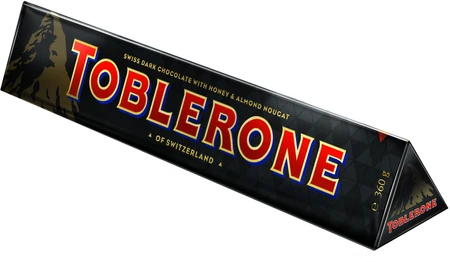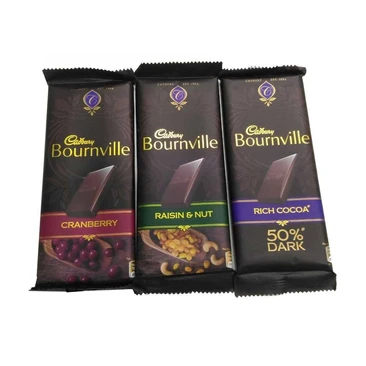
I’ve been in love with chocolate, ever since I was allowed to have it! And I don’t really care what color it is (definitely not a racist!) White Chocolate, Milk Chocolate, or Dark Chocolate, I’m forever ready for any and all. When I was a kid, milk chocolate was the most common, Cadburys Dairy Milk; then came white chocolate as Nestle’s Milky Bar; it was however way into my late teens, that I discovered dark chocolate. And it is dark chocolate that I want to write about today. I promise to keep the health mumbo-jumbo about dark chocolate to the minimum and focus on my favorites primarily. If by the end of this post, you’re left with a strong craving for some dark chocolate, do let me know in the comments section below
A chocolate loyalist, like me, will tell you that chocolate in any form is good but recent research has been highlighting dark chocolate for its claimed superpowers. There are several theories on how dark chocolate can aid in keeping the heart healthy, produce anti-inflammatory compounds in the gut, or even help increase the blood flow to the skin which helps in improving its hydration and complexion, and the most recent one claims it helps prevent cancer. A 100-gram bar of dark chocolate with 70–85% cocoa contains fiber, iron, magnesium, copper, manganese, potassium, phosphorus, zinc, and selenium. With organic compounds such as polyphenols, flavanols, and catechins, dark chocolate can function as an antioxidant, helping regulate blood pressure and cholesterol levels. Loaded with high quantities of stimulants like caffeine and theobromine, dark chocolate can improve brain function too. There are several published reports on these, which I will refrain from linking here; and in either case, I consume dark chocolate only for its taste, despite what I tell my mother. Shhh.
Before I dive into the best of the best dark chocolate that is out there (my favorites); take a look at my personal how-to-buy-dark-chocolate guide.
Ø The percentage of cocoa in the chocolate determines its characteristic bitter-sweet taste. It’s best to choose a percentage that agrees with your palate. While it is a popular belief that 70%+ cocoa percentage constitutes dark chocolate, percentages as low as 55% can give you the same bitter-sweet taste you crave at perhaps a 70% or 75% concentration, depending upon the brand.
Ø The main components of good quality chocolate should be restricted to cocoa or cacao, cocoa butter or coconut oil, and a natural sweetener. Cocoa or a form of cocoa is the first ingredient. If the ingredient section at the back of the bar of chocolate you are trying to purchase, reads anything else (as the first ingredient), drop it; it isn’t worth your time, money, or calories. There shouldn’t be any unnecessary ingredients like trans fat, milk (high-quality dark chocolate seldom has milk solids, but milk as an ingredient is a solid no-no), soy products, hydrogenated fats, thickeners, humectants, or high amounts added of sugar or corn syrup.
Ø Look for organic labeling on your chocolate. It should say organic or 100% organic somewhere on the pack. 100% organic label indicates that all ingredients used in the chocolate are organic, and this limits you from ingesting chemically manufactured chocolate which has its own bucket of health issues.
Ø The origin of the cocoa beans used in making the chocolate bar is linked to its flavor profile. For example, Madagascan cocoa beans offer subtle, balanced notes of vanilla; Ecuadorean Arriba beans have a hint of jasmine and earthy notes of espresso and burnt sugar; Tanzanian beans have a roasted flavor; Mexican beans give off a rich strong earthy flavor, and Brazilian beans have a fruity flavor.
Ø Irrespective of your earning power, the cost while choosing a bar of dark chocolate, is an important factor to consider. Many brands sell at a price that doesn’t really match the quality of their product. Choose a bar, where you feel the price is justified for a combination of the above factors.
More of an attribute you can judge after you buy the chocolate (for reference for your next buy) is the appearance of the chocolate. High-quality chocolate has a smooth and glossy finish. If chocolate has been tempered properly as it will appear glossy, without being overly shiny or matte and each piece will break off with a crisp snap.
Now let me share a list of my favorite dark chocolates. There is a good possibility that I have hogged on each to the point of saturation, so my review may vary (ever so slightly) but will try and keep it as objective as possible.
#1 Lindt Excellence

Probably the most popular brand of chocolate (except maybe Godiva, more on that below), Lindt offers variants of 70%, 78%, 85%, 90%, and 99% cacao; and irrespective of the percentage of cacao, each bar has a strong and pungent flavor and the strong bitterness hits the palate almost immediately. With a rich smooth texture and a long shelf life, there are several flavors available too. I started off, with the plain chocolate bars, from 70% working my way up to 90% (which I didn’t particularly like). Instead of promoting 99% cacao bars, I switched completely to the large range of flavors Lindt dark chocolate has to offer. My all-time favorites include sea salt, mint, caramel & sea salt, orange intense, and lime zest.
The 100gm is available online and in most shops in the range of Rs. 300-350; however, the best price or deals, are at duty-free shops (Indian and/or international airports). You can also try the Lindt Lindor extra dark chocolate truffles, for approximately Rs. 900 per 200 gm. Personally, I prefer the milk and caramel Lindt truffles instead.
#2 Toblerone (Dark)

We’ve all (well most of us anyway) grown-up relating Toblerone to the official foreign wali chocolate. And while all variants of this chocolate (milk, white, dark, crunchy almond, and fruit & nut) are too damn delicious, Toblerone dark, holds a special place in my heart (read palate). This Swiss chocolate with its characteristic triangular, mountain-shaped pieces, is deliciously laced with honey and almond nougat flavor, with a powerful dark chocolate punch.
Unfortunately, the Indian versions are sh*t. It makes sense to either buy the imported versions or ask your friends and family to buy them for you from abroad. The imported 360 gm pack is easily available in supermarkets like Modern Bazar, online, and at airport duty-free shops too. Depending upon where you get it from, it can cost anywhere between Rs. 500-700. You can also try the Toblerone Dark miniatures (about 34 in a pack), available between Rs. 400-750.
#3 Kit Kat Dark

Having grown up singing along to, have a break, have a kit-kat, my introduction to Kit Kat Dark was like a Christmas present (same sentiment!). The crispy mix of a wafer with dark chocolate, with just a hint of nuts and peanuts, and the classic snap of the chocolate breaking had me sold instantly. Contrary to popular belief, I prefer Kit Kat Dark at room temperature, as the wafer tastes soggy after refrigeration; but considering how we have more summers than any other season, Kit Kat Dark is my ultimate winter binge.
The average Indian pack (~40 gm) costs Rs. 50 and is almost as good as its American version, which is easily available in superstores like Modern Bazar for Rs. 250-699 depending upon the pack size and variants.
#4 Godiva

I first discovered Godiva, when I tasted their hot chocolate (tasted like a whole bar of rich smooth chocolate had been melted into a cup). This premium Belgium chocolate, although one of the finest chocolate brands in the world, isn’t as popular in India as everywhere else. Available in several variants, the Godiva Dark, has an exceptionally full-bodied flavor that lingers for some time after eating. With a smoky roast and an almost nutty scent, this 72% cacao bar has a characteristic velvety smooth texture.
Available as 100-gram bars for Rs. 650-750; or as truffles (12-24 pieces) for Rs. 4,300- 9,800. Unfortunately, Godiva chocolates, in general, are not as easily available as I’d like and are hard to get. Your best bet would either be a duty-free shop or friends and family coming from abroad.
#5 Amul

Much to popular belief Indian-origin dark chocolate from Amul is more of a dessert in itself than just chocolate! This could also be so, as I just discovered the creamy dark chocolate recently when I was weaning off milk chocolate (newbie lactose intolerant cadet). Nevertheless, this sugar-free 55% pure cocoa dark chocolate is perfect if you’re obsessed with dark chocolate, but perpetually on a budget. It breaks with a characteristic snap and preserves its quality and taste even when refrigerated.
This 40/150 grams bar of pure bliss is readily available at most general stores and supermarkets and online for Rs. 25/125 respectively. If you’re into bitter dark chocolate you can try out the 99% cacao variant, though its availability is restricted to supermarkets like Modern Bazar or 24x7s.
#6 Cadbury Bournville

If you’re unsure whether you want to switch to the dark side (dark chocolate, no pun intended! 
Easily available at most general stores and online, all three variants, of 31/80 gms at Rs. 45/100 respectively is what you want to start off with, if you don’t like your chocolate to have an overwhelming after-taste.
#7 Brookside

Now this is slightly different from your regular bar of dark chocolate. In fact, it’s not a bar at all. It’s more like small dark chocolate balls filled with fruit centers. If you haven’t had these, the above description may not allure you as much; but give it a try, for my sake. Available mostly as a combo pack of three flavors pomegranate, blueberry along with acai, and raspberry along with goji. Each of these three fruit flavors has a distinct taste, which coupled with a thick, delicious dark chocolate covering, is ideal for binge eating! I can easily polish off a combo pack within minutes! Unlike other dark chocolates, there is no bitter aftertaste, thanks to a super sweet fruity center and a mere 30% dark chocolate cover shell.
These luxury chocolates are available in 33 gm/100 gm packs for Rs. 50/140 respectively. Seldom sold as individual packs, you may find the 100 gm packs for a single variant. The 33 gm packs are available as a combo pack, at most general stores, supermarkets, and online. Though novel chocolate, it may not appeal to everyone.
#8 Mason & Co. Intense Dark Organic Chocolate

This is as peculiar as it gets (in terms of dark chocolate anyway). Mason & Co. Intense dark organic chocolate is a combination of fruits and nuts. The 60 gm bar, consists of 70% raisin and black sesame artisanal dark chocolate. Completely soy and gluten-free, this organic and vegan chocolate bar, is sweetened with a very small amount of organic cane sugar to balance the intense dark chocolate taste, adding to it a sweet caramel touch. The 85% intense dark chocolate bar is ideal for die-hard dark chocolate lovers and is best paired with dry red wines or salty foods. I personally love pairing it with blue cheese! Other variants from 49% cacao are also offered, but the 85% intense dark chocolate is what you need to look out for.
You may not find it easily, but your best bet would be duty-free shops at airports or some online stores. The 60 gm bar is available for Rs. 295.


No comments:
Post a Comment